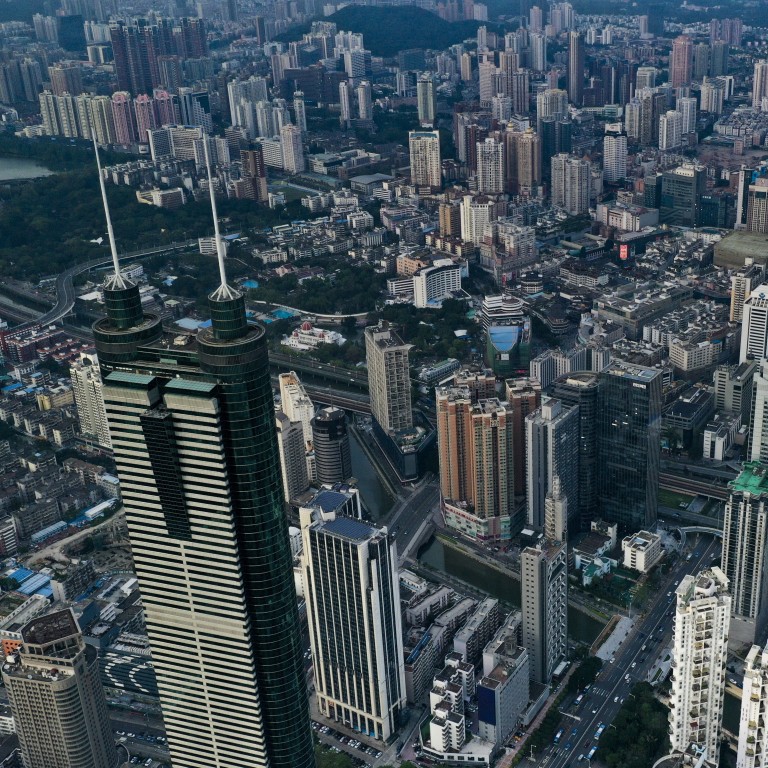
Shenzhen property: how home prices in the Chinese tech hub compare to Hong Kong’s
- Prices of second-hand homes in Shenzhen have risen 88.3 per cent since 2015 – more than any other city in China, according to government data
- Hong Kong permanent residents can buy one home in Shenzhen, and can borrow up to 70 per cent of the property’s value
Shenzhen was nothing more than a fishing village four decades ago, before China carved out its first special economic zone to experiment with market capitalism.
Well-heeled people from neighbouring Hong Kong flocked across the border for holidays, or to buy a second home for a fraction of what it would cost at home.
Things look rather different now.
It has ranked among the top five most expensive cities to live in globally for two consecutive years.
Here is what you need to know about the Shenzhen housing market.
1. How much does it cost to buy a home in Shenzhen?
Prices of second-hand homes have risen 88.3 per cent since 2015 – more than any other city in China – while new home prices are up 57.8 per cent, according to government data.
Shenzhen ranked No 4 globally last year among major cities worldwide, with an average property price of US$783,855 (HK$6.1 million) or US$783 per square foot, according to CBRE.
A frenzy of home buying gathered pace in Shenzhen in April last year when the central government loosened liquidity to help rescue the country’s virus-hit economy by giving out cheaper loans.
An example was the crazed scenes at the launch of a new development in the city’s Guangming district in June when 3,000 people shrugged off concerns about Covid-19 and queued at midnight to enter a draw for the right to buy one of just 394 homes.
2. Who is qualified to buy a home in Shenzhen?
On July 15, it tightened rules on home purchases by introducing additional residency and tax requirements to stop speculation in the housing market.
Residents with hukou in Shenzhen are only allowed to buy a home if they have held the local household registration paper for more than three years.
Families are restricted to owning two homes, while single people can only own one.
Residents without hukou are currently required to pay more than five years of social security funds to qualify for the right to buy one home in the city.
To buy a home in a new residential project, one has to earn a higher score in a points-based system to prioritise deserving first-time buyers and push back those who already own homes.
3. Can Hong Kong people buy a home, and will that ease Hong Kong’s housing crisis?
Hong Kong permanent residents can buy one home in Shenzhen, and can borrow up to 70 per cent of the property’s value.
However, taking into account the rising home prices and long journey, it may not be feasible for most Hongkongers to seek an affordable, more spacious home there.
Although the price per square foot in Shenzhen is only US$783, far lower than Hong Kong’s US$1,987, an average property in Shenzhen costs about HK$6 million because most homes there are bigger than those in Hong Kong, famous for its shoebox units.
For HK$6 million, a Hongkonger can get a brand new one-bedroom flat in one of the most sought-after residential projects in the city – the Pavilia Farm above Tai Wai Station in the New Territories – or a two-bedroom, lived-in home in the Whampoa Estate in Kowloon.
In Shenzhen, HK$6million can buy a 100 square-metre flat in Longgang district, more than an hour’s drive to Futian high-speed rail station, or a 50 square-metre flat in Futian district, 10 minutes from the station connecting to Western Kowloon Station in Hong Kong.
“I would rather live in Hong Kong since homes are not that cheap in Shenzhen and I have to put in more time travelling to work, or meeting friends and family here,” said Fiona Kwan, a 30-year-old lawyer who works in Central, Hong Kong, and currently stays in a 200 square-foot studio in Nam Cheong.


